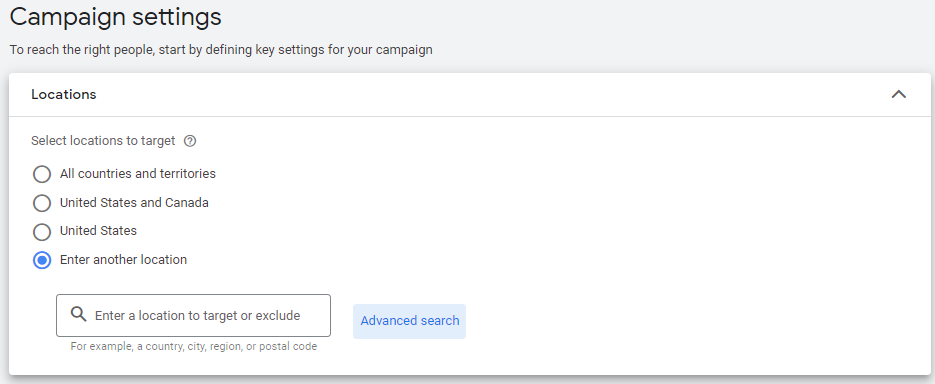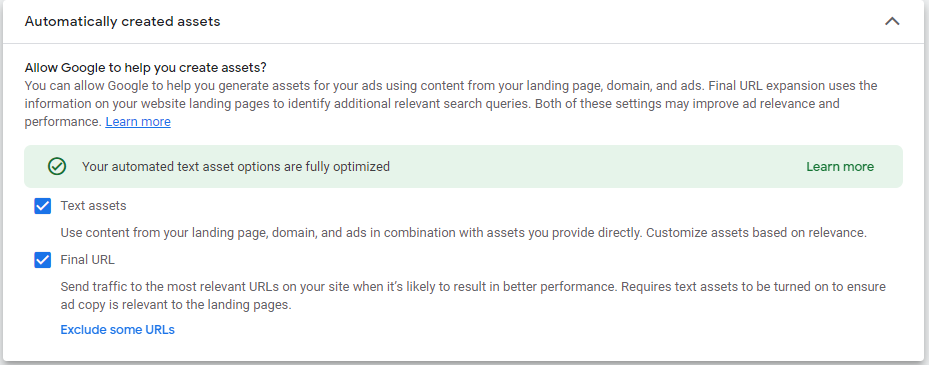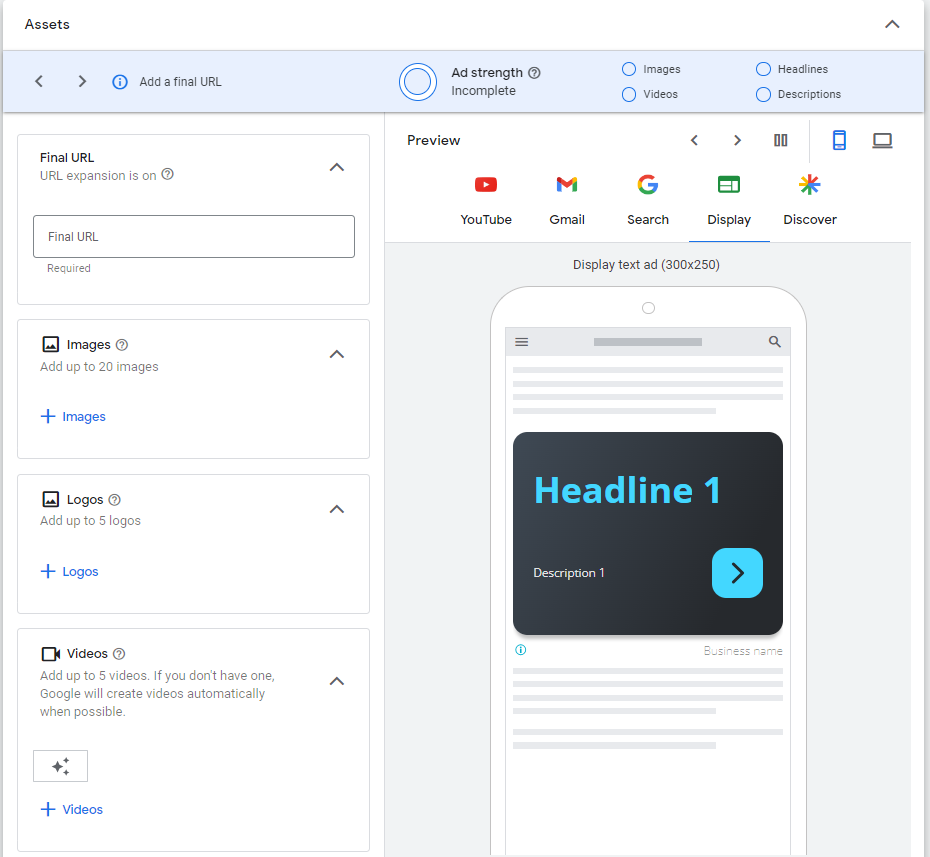Performance Max has taken Google’s center stage in the last few years.
Originally launched in 2021, this PPC campaign type has been met with both praise and criticism among advertisers.
But with AI and machine learning in full force Performance Max isn’t something to ignore anymore.
Keep reading to understand the ins and outs of what Performance Max is, how it works, and how to best leverage it for optimal results.
What Is Performance Max?
Performance Max (PMax) is a unique, automated campaign type in Google Ads.
It utilizes Google’s machine learning capabilities to drive more conversions across all of Google’s owned inventory. PMax ads can serve across:
- Search.
- Display.
- YouTube.
- Discover.
- Gmail.
- Maps.
Ads are automatically created from advertiser inputs, similar to how responsive search and display ads are created.
Like its name, PMax is driven by specified conversion goals at the campaign level.
How Does Performance Max Work?
Performance Max uses machine learning models to drive more conversions by optimizing bids and placements in real time. PMax uses Smart Bidding to achieve these goals.
Google’s AI technology looks across many factors when optimizing PMax campaigns, including:
- Audiences.
- Creatives.
- Budget optimization.
- Bidding strategy
- Attribution
- And more.
Simply put, in order for PMax to work, advertisers need to provide the best inputs for machine learning and AI technologies to work.
Let’s take a closer look at some of the key inputs to launch a Performance Max campaign.
Budget And Bidding
The first input is bidding-focused. You’ll choose what to focus on:
- Conversions.
- Conversion value.
Additionally, you can set a target cost per action (CPA) or target return on ad spend (ROAS), which is optional.
Next, you have the option to bid differently for new customer acquisition.
By default, the option is set to bid higher for new customers. This means the campaign will still reach all potential customers, but prioritize net new customers with a higher bid.
In order to use new customer acquisition, the following inputs are required:
- The bidding strategy type needs to be “Maximize Conversion Value.”
- An audience segment with at least 1,000 active members to help identify existing customers.
 Screenshot from Google Ads, October 2023
Screenshot from Google Ads, October 2023Location, Language, And Ad Scheduling
Next, you’ll choose your location settings.
The most recent update of Google Ads Editor fully supports PMax campaigns, which will be helpful if you need to include a lot of individual locations.
You can also bulk import them in the online interface by clicking “advanced search”:
 Screenshot from Google Ads, October 2023
Screenshot from Google Ads, October 2023After that, you’ll choose targeted languages, ad schedule (if applicable), and campaign run dates.
Automatically Created Assets
Within PMax campaign settings, there’s a section called “automatically created assets.”
By default, these are checked on for text assets and final URL, which is important to review.
If these remain selected, you’re allowing Google to create new text assets for ads that are based on your landing page, domain, and other ads.
It also means that Google has the right to change the final URL to send traffic to what it deems is the most appropriate landing page, even if you provided an input.
When in doubt, turn these settings off to retain as much control in the beginning.
 Screenshot from Google Ads, October 2023
Screenshot from Google Ads, October 2023Asset Groups (Aka “Ads”)
This is where the bulk of the PMax setup happens.
The following assets are set at this level:
- Final URL – This is where the user will be directed after clicking on an ad.
- Images – Up to 20 images can be added. A combination of landscape, square, and portrait orientations is recommended.
- Logos – At least one square logo is required. Optional landscape logos are recommended.
- Videos – Up to five videos can be added. Note that if no videos are added, Google will create automated videos when possible.
- Headlines – Up to 15 headlines can be added. Each headline has a 30-character limit.
- Long headlines – Up to five long headlines can be added. Each has a 90-character limit.
- Descriptions – A short description of 60 characters is required. Up to 4 additional descriptions with a 90-character limit.
- Business name – This field is required, with a 25-character limit.
- Sitelinks – At least two are required in order for sitelinks to show in ads. The recommended number is at least four.
- Call to action – This can be automated, where Google tests different CTAs, or you can choose from different options.
- Audience signal – Be sure to add relevant audience signals, such as customer lists or in-market segments, to help Google find new customers faster.
 Screenshot from Google Ads, October 2023
Screenshot from Google Ads, October 2023It’s important to note that with audience signals, think of them more like audience “suggestions.”
By adding audience signals, your campaigns can be targeted to those signals, but not exclusively.
Google will use the audience signal inputs to identify similar customers who are more likely to purchase your product or service.
Additional, optional asset types can be set at this level, including:
- Promotions.
- Prices.
- Calls.
- Structured snippets.
- Lead forms.
- Callouts.
- Display path.
What Is The Difference Between Performance Max, Search Ads, And Demand Gen Ads?
Performance Max is certainly a different breed of campaign type.
Per Google, PMax is meant to complement keyword-based Search campaigns to help drive more customers. They are not meant to be a replacement.
There are three key differences between the different campaign types:
- Placements.
- Intention.
- Targeting options.
The biggest difference between PMax vs. Search ads or Demand Gen ads is placement options.
With Performance Max, ads are adapted and served across all of Google’s inventory of Search, Display, YouTube, Gmail, Discover, and Maps.
Search campaigns are shown strictly on the Google search results page, as well as its Search Partners network if campaigns are opted in.
Demand Gen (formerly Discovery) campaigns are more visually focused, with ads appearing across YouTube, Discover, and Gmail placements.
Another big difference between the three campaign types is their intent:
- Performance Max: targets users across various platforms regardless of intent.
- Search: targets users with higher intent (actively searching for a product or service).
- Demand Gen: targets users who are exploring content or show signs of interest.
Lastly, there are differentiators in how each campaign type can target users:
- Performance Max: Uses machine learning and audience signals to optimize targeting.
- Search: Primarily uses keyword targeting, with other levers available like demographics, interests, and first-party data.
- Demand Gen: Primarily targets users based on interests and behaviors.
Each campaign type has its unique advantages and is mainly driven by different marketing objectives.
What Are The Benefits Of Performance Max?
While PMax is an automated campaign type, it certainly has its benefits to running a campaign.
Here are some of the key benefits of PMax campaigns:
- Cross-platform reach – This is the only campaign type that allows you to reach users across the entire scope of Google inventory in one campaign. With that, it opens up additional audiences that you may not have reached in singular campaign types.
- Automated bidding – Google manages the heavy lifting of optimizing bids for the right user at the right time with the right message. Not only that, Google optimizes budget across the different placements based on performance.
- Simplified campaign management – PMax provides unified reporting across all platforms, reduces the amount of manual work (like bid adjustments), and they’re relatively easy to set up (if you know what to look for in settings).
- Advanced creative capabilities – You’re able to leverage a large variety of ad formats because ads can be placed across all of Google’s inventory. Additionally, Google automatically tests different formats and combinations to reach peak effectiveness.
- Adaptiveness – At the heart of PMax is its machine learning capabilities. That means the algorithms quickly adapt to sudden user behavior changes, market trends, or seasonality.
Who Should Use Performance Max?
Certain industries are likely to benefit more from PMax than others.
A good gauge to determine if PMax is right for your brand relies on the following:
- How quickly sales or purchases are generated.
- Budget flexibility.
- Sufficient creative assets.
Typically, Performance Max works well for ecommerce brands, especially if product feeds are enabled within the campaign.
If you’re a brand that has a relatively short sales or purchase cycle, PMax can help drive incremental conversions.
However, if your business is primarily lead generation or has a long sales cycle, this may not be the campaign type for you.
Part of the beauty of PMax is that it relies on conversion history data, so if conversion volume is sparse, performance may be hindered.
The second indicator of whether Performance Max is for you relates to budget.
If budget is strict or constantly limited, campaigns may not reach their full potential because of limited learnings.
At a minimum, it’s recommended to spend at least $50-$100 per day for 30 days to determine results.
Lastly, if your brand has the ability to create and maintain a healthy volume of creative assets, PMax is worth testing.
Brands that have limited creative resources or strict brand guidelines may not benefit from leveraging this automated campaign type.
5 Best Practices For Performance Max
Success lies within the settings.
Because Performance Max is so automated, it still requires human input and observations to get the most bang for your buck.
Below are five best practices for implementing and optimizing PMax campaigns.
#1: Ensure Conversion Tracking Implementation Is Accurate
PMax relies on conversion data to fully optimize and target effectively.
That’s why accurate conversion tracking is so crucial to success.
Make sure that the appropriate conversion points are tracking accurately, as well as import any offline conversion data if applicable.
This is considered full-funnel conversion tracking, which allows Google to see the whole picture of how your customers convert.
#2: Select The Appropriate Goal And Targets For Bidding Strategy
It’s important to have some sort of idea of what a customer is worth to you.
If you have historical KPIs of target CPA or target ROAS, use those as a starting point when setting your bid strategy.
Setting the goals too high or too low can produce significant volatility in campaign performance.
For example, a typical branded search campaign likely has a much higher ROAS than a non-branded campaign.
Don’t set your conversion targets in accordance with what you see for brand terms. By doing so, targeting and reach may become limited, which means fewer conversions and poor performance.
#3: Remember To Check Automated Assets Settings
The automated settings discussed at the beginning are so important that it’s worth repeating again here.
Advertisers still need to maintain some level of control. This holds even more true for highly regulated industries.
If you have a specific landing page to send users to, turn off the URL expansion setting at the campaign level.
If you need to maintain complete control of ad copy and assets, make sure to uncheck the box that allows Google to create and implement assets on your behalf.
#4: Use High-intent Audience Signals To Start
Another “make or break” setting to keep in mind is audience signals.
Audience signals essentially give Google a guide on what types of customers to find and go after.
Start by adding high-intent audience signals to your PMax campaigns to kickstart performance.
High-intent audience signals could include:
- 1st party customer or purchase data.
- Website visitors or engagers.
- In-market audiences.
- Custom or combination audiences.
Adding broad audience signals like affinity or lifestyle segments won’t be enough for Google to learn who your best customer is.
#5: Add Brand Terms As Negative Keywords To Avoid Cannibalization
When PMax first launched, many advertisers were shocked at how well their campaigns were performing.
Until they reviewed their Branded search campaigns.
As a reminder, PMax is an automated campaign type, which means you can’t target keywords. But you can exclude them.
As Performance Max continues to sophisticate, Google now allows negative keyword lists for these campaigns.
At the very minimum, create a list of targeted brand keywords and exclude them in PMax.
This allows your tried-and-true search campaign to run and optimize per usual, without PMax cannibalizing any existing efforts, and truly be used as a complement to search campaigns.
In Summary
Performance Max campaigns can be a powerful tool for many advertisers if set up and managed the right way.
As with all new campaign types, it’s worth testing to identify if it’s suitable for your brand.
By having a clear understanding of objectives, goals, audience targeting, and creative direction, Performance Max can be the boost your PPC program needs to drive more customers on a greater scale.
More resources:
- 11 Tips To Get The Best Out Of Performance Max Campaigns
- Performance Max: 7 PPC Community & Google Team Insights
- The Biggest PPC Trends of 2023, According to 22 Experts
Featured Image: BestForBest/Shutterstock





